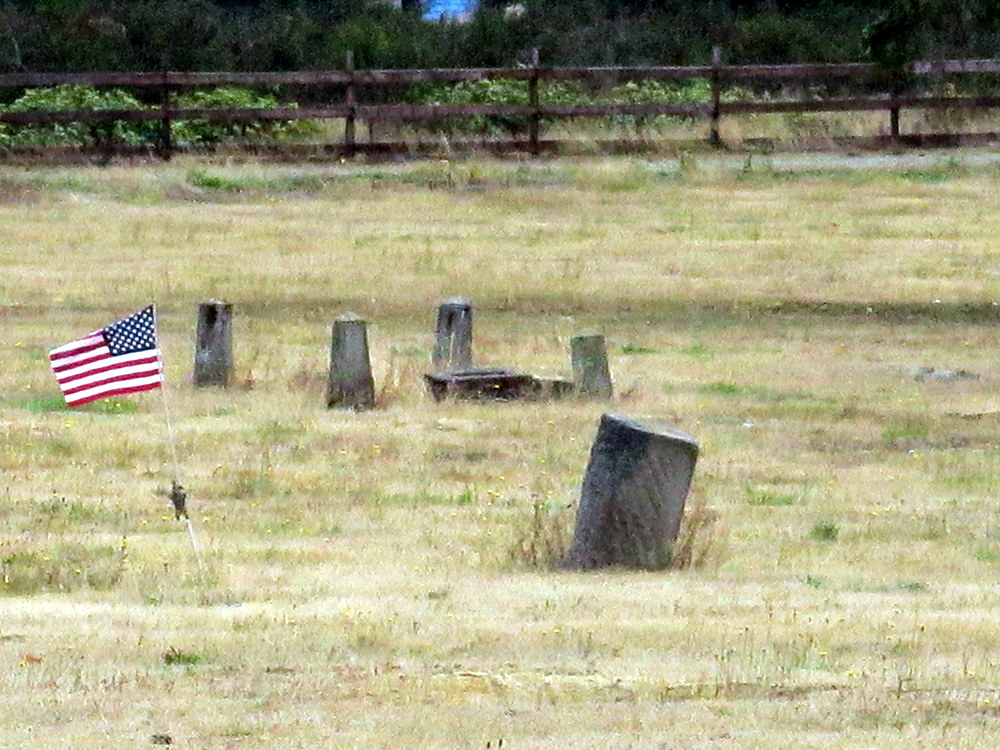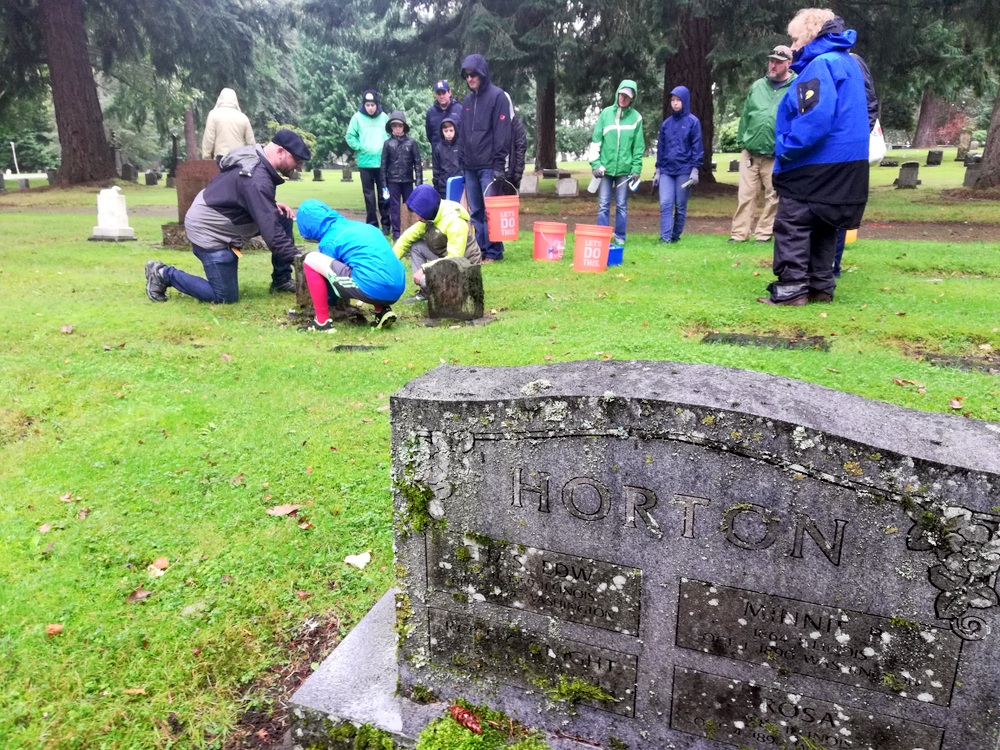It might seem difficult for modern Pierce County residents to imagine that at one time the landscape was dotted with distinct and separate towns rather than the urban sprawl of today. Each of those clusters of houses and businesses had cemeteries of their own, some around churches and hospitals while others were located just outside of the town limits.
Many of these places of eternal rest became increasingly neglected as the decades passed, houses mushroomed around them and larger cemeteries diverted burials away from these smaller graveyards. That is changing as a rising number of volunteers are tending to once forgotten graveyards.
“It’s about respect,” said Laurel Lemke, the guiding force behind Grave Concerns, a nonprofit that raises money to install named headstones at Western State Hospital’s long-closed patient cemetery at Fort Steilacoom Park.
About 3,200 patients were buried in the cemetery between the years 1876 and 1953. Burial sites included simple, numbered markers rather than named headstones because of the social stigma around mental illness during that era. The largely forgotten land then became part of Fort Steilacoom Park. Lemke spearheaded the effort to restore the cemetery and add names to the burial sites. But adding names to the graves took a change in state law, which came in 2004.

Grave Concerns volunteers have since worked to raise money to pay for headstones as well as maintain the cemetery throughout the year as joggers, dog walkers and sports teams enjoy the recreational activities elsewhere in the park. Volunteers have worked with three Eagle Scout projects to add benches, signs and a pathway, installed a Cooley Memorial flagpole, teamed with groups on Civil War marker installations, provided service hour opportunities and answered genealogical inquiries.
The Grave Concerns effort has even spun off efforts to repair and maintain other forgotten cemeteries in Pierce County. Most recently among them is the inmate cemetery at McNeil Island. About 125 inmates who died during their incarceration are buried in the cemetery. They were laid to rest under simple, sequentially numbered headstones enclosed with a fence. Volunteers are working to change that by adding names to the grave markers.

“Our core group of volunteers are pleased to share their skills and processes with the McNeil Island cemetery project, providing support without absorbing that project into our nonprofit community. My role throughout our project has been helping people get involved where they can succeed, networking and publicity. I especially appreciate the volunteers who can manage details and have project management skills to complete our ideas.”
Other forgotten graveyards and gravesites are getting cleaned and repaired more informally. A rising number of individuals are spending their free weekends cleaning aged headstones as a way to serve the community and relieve stress. A recent gathering at the old Tacoma Cemetery drew about a dozen gravestone cleaners on a Saturday morning to scrub moss of more than two dozen overgrown headstones.

The cemetery off South Tacoma Way holds about 30,000 graves. Some of them date back to the dawn of Tacoma itself. The cemetery opened in 1874 and is home to some of the city’s most notable leaders, including General John Sprague, former Governor Ernest Lister and musical pioneer “Rockin’” Robin Roberts.
The area is also the final resting place of 1,600 people who were too poor for funeral services and buried in the adjacent pauper cemetery between 1885 and 1928. The last recorded burial at the two-acre site was that of 45-year-old Andrew Jackson, a Finlander who found himself in Tacoma to work as a logger before dying of asphyxiation by gas. Many headstones are either missing or buried under unkempt grass since the cemetery is no longer maintained or even open to the public.
Other aging and unkempt cemeteries, however, dot the landscape for anyone to explore and research.

Among the must-see sites is Old Settler’s Cemetery in Lakewood. The cemetery was established in 1855 and holds about 250 graves of some of the area’s early pioneers. The site is on the city’s register of historic places and only occasionally mowed by crews from Pierce County, which technically owns the cemetery. The cemetery is located a short drive away from the Steilacoom Masonic Lodge #2 cemetery, which dates back to the turn of the last century although it is closed to the public.
Another is the Anderson Island Cemetery. The cemetery was established in 1874 and is the burial site for the earliest island settlers.
Yet another forgotten cemetery that is well worth the drive can be found at Washington State Soldiers Home in Orting. The retirement home for veterans dates back to 1891, with the cemetery formally opening in 1909 as the first soldier’s cemetery in the state. The five-acre cemetery is the final resting place of 2,658 veterans who saw combat in the Civil War, Spanish American War, World War I, World War II, the Korean Conflict and the Vietnam War. It is known as the “little Arlington” because of its many Civil War grave markers. Four of those graves hold the remains of Medal of Honor recipients. The cemetery had been neglected for years and is now being repaired and maintained courtesy of volunteers.
Resources to find and research cemeteries in your neighborhood include Tombstone Project’s list of all of the 100 known cemeteries and burial sites in the county. Note before you visit them, however, that some of them are either not accessible by car or are located on private property. Another great resource is The Political Graveyard, which lists the resting place of the area’s politically notable.



































